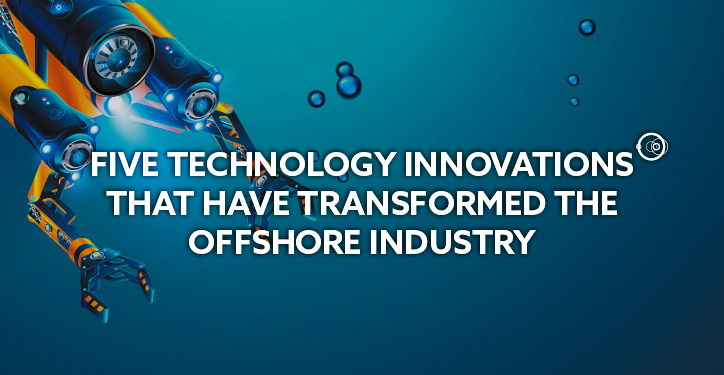The first offshore mobile drilling platform was constructed in 1949 in just 20 feet of water. Exactly 70 years later, Total is expected to drill 3,600 meters (11,811 feet) later this year, setting a new record.
Below we take a look at five relatively recent innovations that have spurred this immense technology advancement, and significantly increased the safety and efficiency of the offshore industry.
Subsea Processing
Subsea wells have come a long way since the first one was completed in 1961. Subsea processing, which includes subsea separation, re-injection and boosting, offers many benefits for offshore platforms. This type of processing is more cost-efficient, more suitable for harsh water conditions and has also proven to increase recovery and production from mature wells, which increases profits. The first successful subsea processing came from the mature Tordis field in the Norwegian North Sea in 2007. Thanks to this advancement, recovery increased by an extra 35 MMbo and extended the life of the field by 15 to 17 years.
ROVs/AUVs
As robots have been making our homes smarter and easier to maintain, they have also been doing the same for our subsea wells. Remotely operated vehicles (ROVs) and autonomous underwater vehicles (AUVs) have allowed us to navigate our subsea wells like never before. ROVs and AUVs carry cameras, lights and robotic arms to help monitor subsea wells, especially in harsh conditions where it’s unsafe or impossible for humans to dive.
Drones
Much like advancements in ROVs and AUVs, drones have improved our ability to safely navigate offshore platforms, but in the air. Drones offer high-quality imaging, which can help operators map potential platform locations, track progress and detect hazards. Drones also assist offshore operators in routine inspections of areas on the platform that are difficult and dangerous for humans to access. The use of drones can be more cost-effective and efficient than traditional methods of inspection, which often mean specialists flying in to assess the equipment in person.
High Pressure, High Temperature
(HP/HT) Wells
As the technologies listed above have allowed us to move platforms into deeper waters, we have run into higher pressure and higher temperature wells. Before the technological advances of the last 50 years, many HP/HT areas were too hazardous, challenging or expensive to operate in. However, as our knowledge of these harsh conditions grows and engineering advances, the number of successful HP/HT wells is increasing. Mostly located in the North Sea, Gulf of Mexico and China, HP/HT wells have a bottomhole temperature higher than 300 degrees Fahrenheit. To safely operate in these well conditions, operators rely heavily on expertly engineered extreme materials of the highest grades.
Digitalisation
While the shift to digitalisation has been slower in oil and gas than in some other industries, the leap has been a clear one in recent years with digitalisation the topic of many oil and gas conferences around the world. The shift toward digitalisation allows us to accurately monitor technologies, comprehensively track data and explore previously uncharted areas. Today we can monitor what’s happening below the surface with pinpoint precision with just a touch of the finger. This includes smart well technologies that see and hear what’s happening downhole up to 30,000 feet, change gas rate without well intervention and much more.
All of these technological innovations have taken the world’s offshore potential to new depths and have helped make the industry safer, more cost-effective and efficient.
Want to know what’s next for the industry? Read how subsea is uniting oil and renewables in ‘blue economy.’
